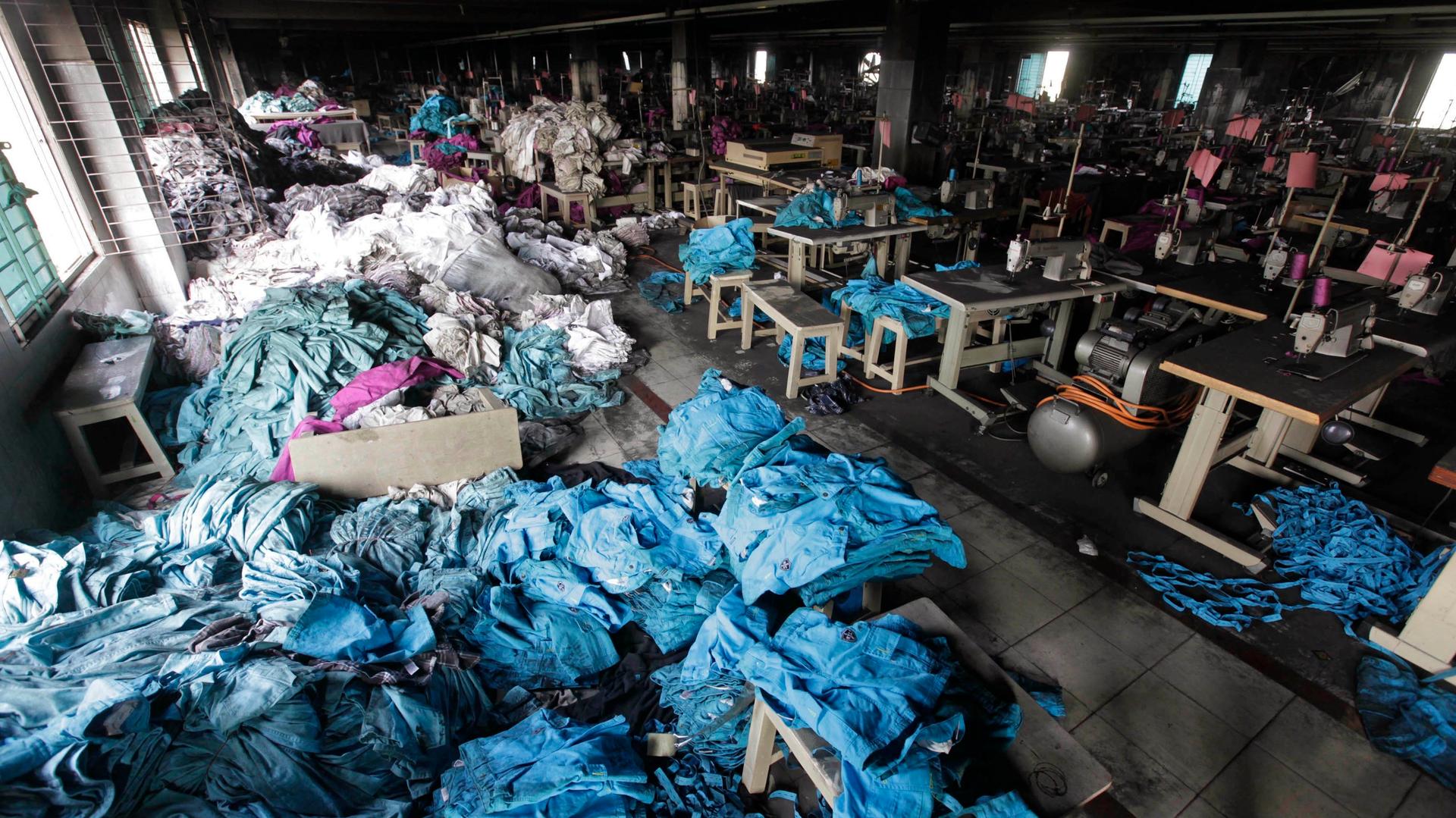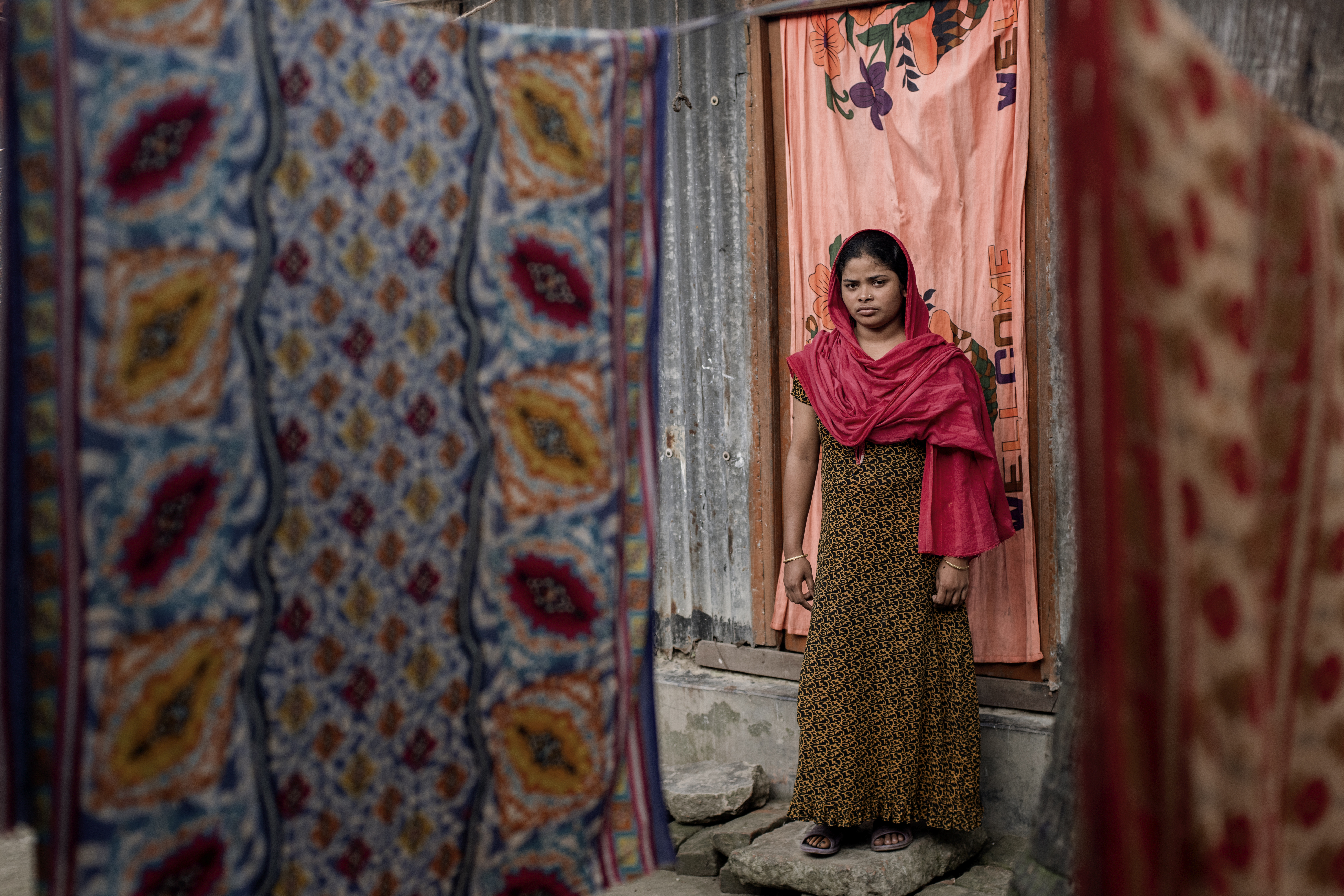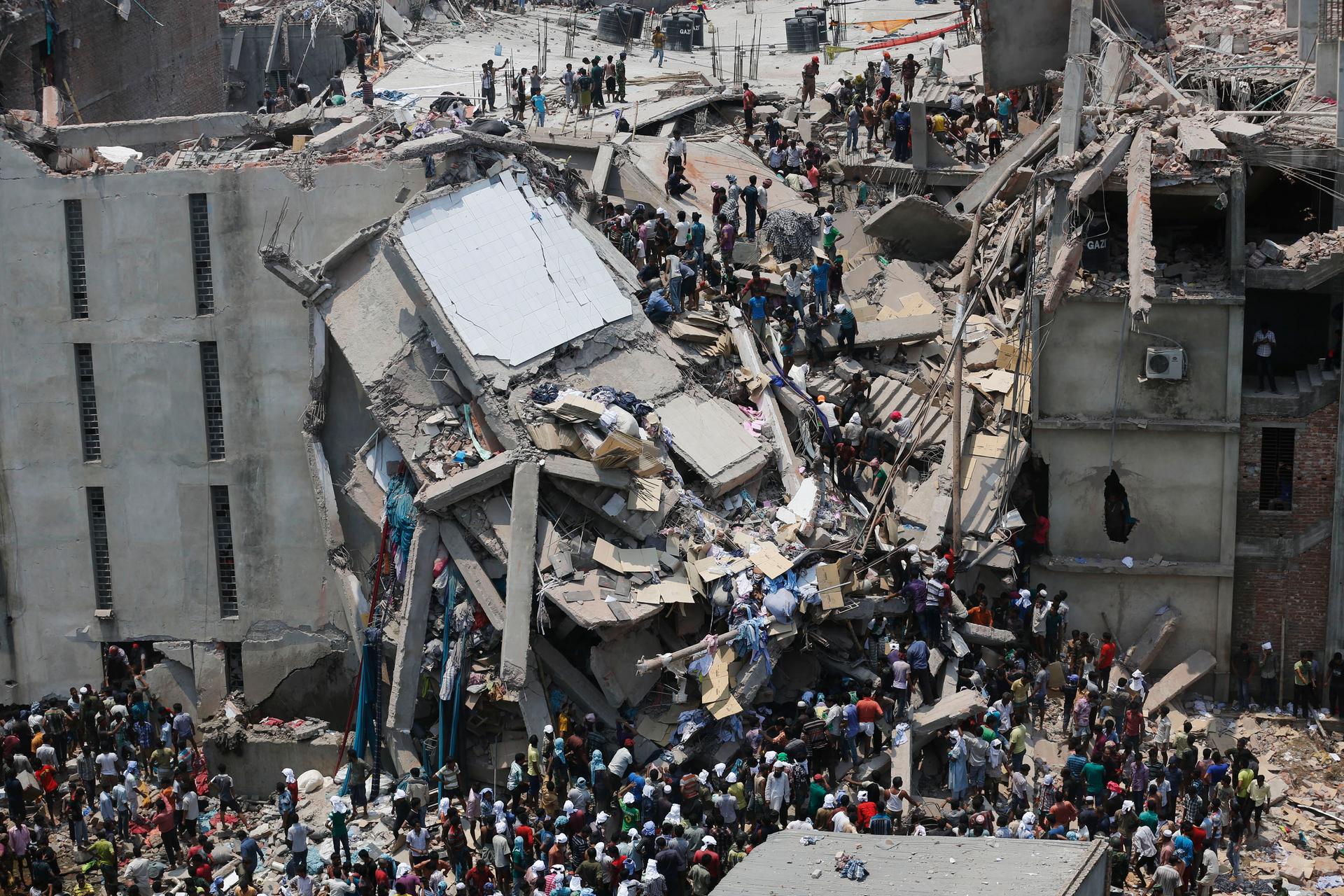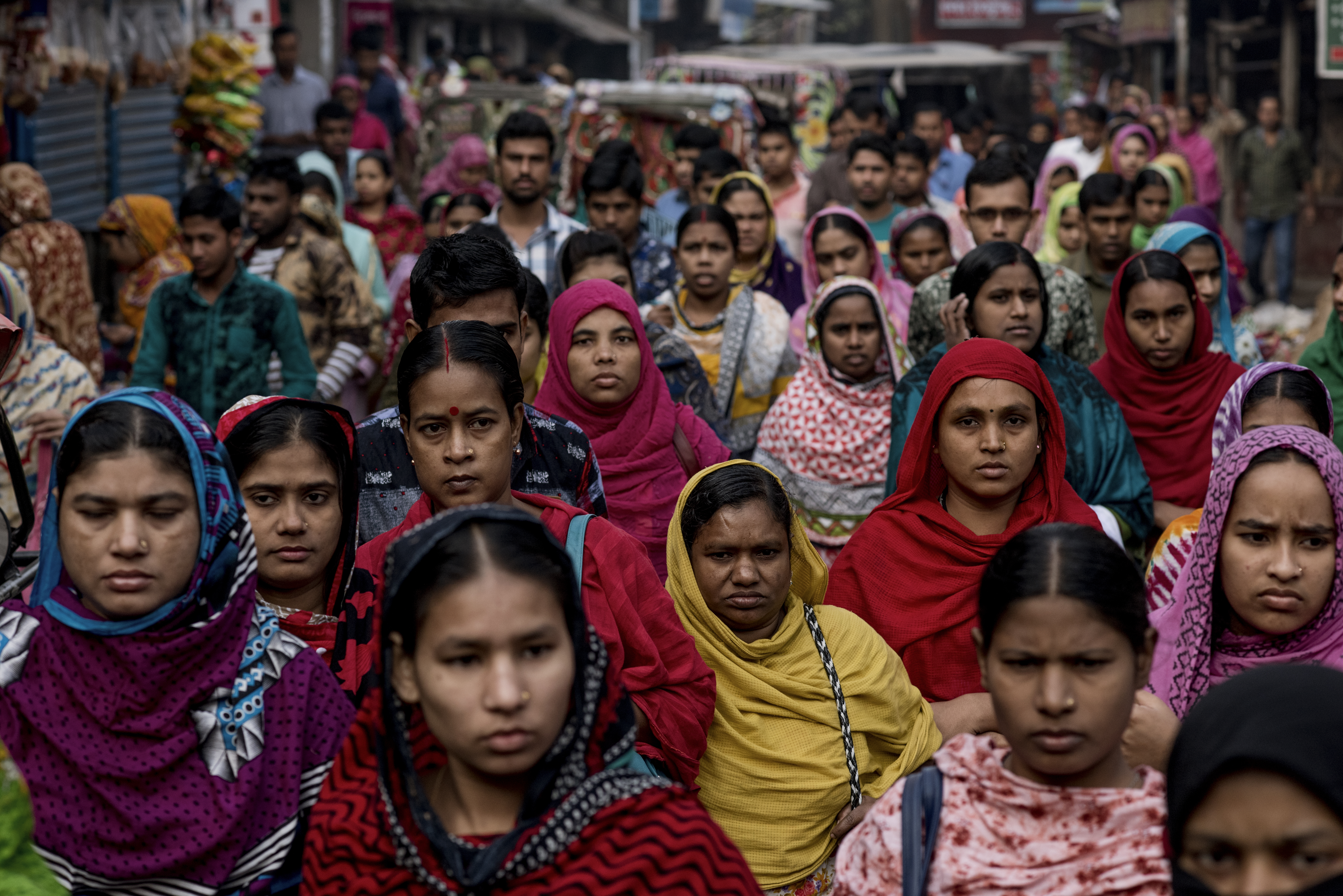Women in bangladesh commute to work.
Arati Baladas, a 20-year-old Bangladeshi woman, lost her mother and her right foot when Rana Plaza collapsed around her in 2013. For Acree Bell Lassiter, now 89, being a creeler, replacing empty spools in a cotton mill in Roanoke Rapids, North Carolina, helped her buy her first car and rent a room.
The promise of a job as a seamstress lured Rotchana Sussman from rural Thailand to El Monte, California, where she ended up working as a virtual slave, putting in 18-hour days in a converted home that was eventually raided by authorities.
These are just some of the women who make your clothes.
The global garment industry is worth $3 trillion, or about 2 percent of the world’s gross domestic product. In some countries, like Bangladesh, textiles are the main export. In the United States, castoffs are filling landfills while the countryside is dotted with vacant 20th-century textile mills and factories. The sprawling industry has moved around the world, paying low wages and producing ever-cheaper fabric at ever-faster rates.
For some women, the garment industry has meant opportunity, independence. “My daddy never gave, he never gave us girls any money,” reflects Lassiter. She grew up in rural North Carolina, in poverty. Then, during World War II, she joined the Roanoke Rapids textile mills. It was hard work but she says, “it was good to be making money, and [to be able to] take care of yourself.”
Read more of her story from AWL's Wear and Tear series here: Her job at the mill bought her a new, better life
For others, it is a job that comes with a steep price. At the clandestine factory where Rotchana Sussman was held against her will, in Los Angeles, she would sometimes whisper to her friend, “We’re gonna have to get out of here at some point.” She spent about a year and a half captive until authorities rescued her and the other slave laborers.
Across Women’s Lives’ “Wear and Tear” series traces the roots of women in the garment industry from textile mills in North Carolina to sweatshops in Los Angeles to crowded factories in Bangladesh, where the memory of the deadly Rana Plaza disaster lingers but real change has been slow.
A history of hiring women from poor, rural areas
For many countries, making clothing is a pathway to joining the global economy.
“This is a pattern we repeatedly see in world history,” says Sheng Lu, an assistant professor at the fashion and apparel program at the University of Delaware. “Like in the 1950s, it was not China, it's Japan, that was the dominant apparel exporter. Then gradually, they started to make textiles, fibers or more sophisticated products, TVs, electronics. This is the process.”
Apparel making, simply the cutting and sewing of garments, is a labor-intensive process, but one that doesn’t require much in the way of capital — sewing machines are cheap compared with other industrial machines.
Timothy Minchin, an expert on the history of textile mills in the United States, says the work represented a major shift for many women: “When [the industry] first set up in New England in the 18th and 19th centuries, they basically recruited young women to work in the mills and they took them off farms. They attracted them through higher economic wages — they could get cash wages for themselves and send it back to their homes, and they stayed in boardinghouses.”
When production moved to New York City, young women from immigrant families fueled the workforce.
“In the 1950s, the apparel industry, particularly in and around New York, was a highly unionized industry,” says Jennifer Bair, a sociologist at the University of Virginia who studies supply chains in developing countries. “Even though the garment workers were women and many of them were immigrant women, the wages were actually quite high.”
When the sewing industry shifted to Mexico in the 1980s, then China and now Bangladesh, workers were again young women from rural areas.
“They create opportunities for women to earn wages in the formal economy,” Bair says. “Before, many of these women either wouldn’t have worked or they would have worked as domestics. They’re being pulled into the labor market, and of course, there’s increases in economic independence that comes from earning wages, but at the same time these women are working long hours and continuing to work when they come home from their shift.”
2 million jobs lost
The US textile and apparel industry peaked in 1973, with about 2.4 million employees, according to Minchin’s research.
By 1996, that number had fallen to 1.5 million. By 2012, there were only 383,000 workers left.
“[Within] about 40 years, 2 million jobs are lost, which is a huge amount, and most of them are in towns like Roanoke Rapids, where there aren’t a lot of jobs,” says Minchin, the author of a book called, “Empty Mills.”
What happened?
Some of it had to do with companies seeking cheaper labor overseas, but the collapse of the industry in the US also coincides with the signing and expiration of several international trade agreements.
The Multifiber Agreement, in effect from 1974 until 2005, imposed quotas on textile exports from developing countries to protect the industries in the US and the European Union.
“Really, the MFA was an exception to the idea of free trade,” Bair explains. “Over time, the MFA came under more and more criticism for really creating barriers to trade for developing countries. Also, it didn’t have the intended effect of protecting apparel and textile jobs in the industrialized countries.”
It was phased out in 2005, and while tariffs still exist and can be imposed, the market has moved more and more toward free trade. The MFA artificially spread the market around the world. When it was lifted, China and Bangladesh were able to take control of more global trade.
In 1994, the US signed NAFTA (North American Free Trade Agreement), which ultimately moved production factories to maquiladoras in Mexico.
“In the first six years of NAFTA, Mexico’s apparel exports to the US increased sixfold,” Bair says. “In 2000, Mexico was the biggest garment exporter to the US.”
But that didn’t last, as exports from China to the US rose, crowding out Mexican-made clothing.
Today, there are 14 active trade agreements in the US concerning the apparel industry, but most companies are unable to take advantage of them, Lu says.
“If you see where the trading partners are for these trade agreements, mostly they're located in the Western Hemisphere,” he says. (Examples include CAFTA-DR and NAFTA.) “There are very few in Asia, but if you look at the trade data, Asia is the largest source and base for US companies.”
Many of the trade agreements have rules of origin requirements that don’t reflect the global economy, he says. If companies must make clothing from yarn that comes from the free trade area, they may save 10 percent on tariffs but end up spending much more on fabric that is substantially cheaper coming from parts of Asia.
Products aren’t shipped from country a to country b anymore, he says. A more realistic supply chain looks like this: Cotton is shipped from the US to Japan and turned into fiber, which is shipped to China to make yarn and fabric, which is then shipped to Vietnam to be turned into apparel, which is then shipped back to the US for sale.
‘Oversupply is the problem, and it’s getting worse’
In the past 15 years, the world’s population has grown by 21.6 percent — and global exports have increased by 123.4 percent, according to Sheng Lu of the University of Delaware. “You can’t imagine how fierce the competition is,” Lu says. “We have too many suppliers out there. Too many countries want to make and export apparel. Oversupply is a problem, and it’s getting worse.”
Lu explains the apparel industry by comparing it to airplanes. “How many countries can make airplanes? Only a few companies — Boeing, Airbus,” he says. “Can you name a country that cannot make apparel? None of them.”
And so, companies have to compete on price, and for clothing companies, the easiest way to keep prices low is to seek out cheaper labor.

At the same time, some companies altered their business model and began producing what we call fast fashion.
“Fast fashion means shorter lead times, shorter life cycles and more frequent supply of new products to the market,” Lu says. “The oversupply problem in the age of fast fashion is getting worse, not better.”
Instead of a collection of clothing that matches a season, fast fashion is a steady supply of new merchandise to stores. Some items are designed, manufactured and in storefronts in less than two weeks’ time. To keep consumers buying more, prices and quality tend to be low.
The deadly Rana Plaza collapse
On April 23, 2013, Arati Baladas was working on a sewing machine when she heard a bang. She says the building “shivered.” Her supervisor told everyone to run. Arati, who often slipped her shoes off at work, searched for her sandal. “Just run!” her supervisor said. She sprinted and tripped. She was buried under the rubble for three days.

Baladas was lucky: More than 1,100 workers died when Rana Plaza in Dhaka collapsed. The building housed multiple factories, several shops and a bank. The building had four more levels than it was designed for, according to The New York Times. Bangladeshi media reported that cracks had been found in the building the day before the collapse. Shops and the bank were closed, but owners ordered the garment workers back inside to finish orders.
The following morning, as generators clicked on, the structure collapsed. More than 3,000 workers were inside and the death toll remains the deadliest garment-factory disaster in global history: 1,129 died, and more than 2,500 were injured.

The event shocked consumers in America and Europe. Rana Plaza made clothing for the United Colors of Benetton, Bonmarché, The Children’s Place, El Corte Inglés, Monsoon Accessorize, Mango, Matalan, Primark and Walmart.
Four days after the disaster, building owner Sohel Rana was arrested on the Indo-Bangladeshi border. On Aug. 29, 2017, Rana was sentenced to three years in prison for failing to declare his personal wealth to Bangladesh’s anti-draft commission. A murder trial over the building collapse has been delayed and appealed to a higher court.
In the wake of the disaster, two different agreements formed to better the conditions at Bangladeshi factories: the Accord on Fire and Building Safety in Bangladesh and the Alliance for Bangladesh Worker Safety. Today, more than 200 brands have signed the accord, but not some of the huge American brands that dominate the industry. Currently, 29 American brands (including giant companies like The Gap, Target and Walmart) have signed with the alliance. But the accord is a legally binding agreement and the alliance is simply a corporate initiative.
Both efforts inspect factories for fire safety, blocked exits and structural integrity. But some academics estimate that there could be as many as 7,000 factories in Bangladesh and these safety initiatives cover only about 1,900.
It’s questionable how much of an impact the inspections have had. A 2014 report from New York University found that not much had changed in Bangladesh.
Today, Arati Baladas gets a stipend from the government, a compensation for Rana Plaza victims. Without her leg, she would have trouble working at a factory. And she wouldn’t want to. She doesn’t believe anything has changed. “My baby will never work at a garment factory,” she says.
Changing a global market
Change can happen, says Sheng Lu, the University of Delaware associate professor, and some of that change comes through consumers and some of it can come in the form of policy. There was a clause in the Trans-Pacific Partnership that encouraged better working conditions for garment workers in Vietnam, he says.
Similar systems can work for Bangladesh and the European and American markets. Consumer pressure, too, he says, can actually be effective in making gradual changes.
“If they see consumers expect something different, this may push the industry to change,” he says. “If consumers don’t care, if they say, ‘I want more fashion, faster items,’ the companies will only cater for those shopping behaviors. Nothing will change unless the consumers themselves say, “I don’t want to shop in this way.””
Jocelyn Whipple works on the global coordination team for Fashion Revolution, a brand-transparency group that advocates for more ethical and sustainable fashion. She, too, says consumers have more power than they realize.
“Communicating with brands you like and that you feel you would like to see them doing more,” she says. “A lot more people could be doing that, and it genuinely would start making things happen faster.”
Whipple still holds brands responsible for their choices.
“We’re not saying, ‘We need more blue fleeces,’” she says. “Brands are choosing to take the Earth’s resources and then transform them into this product and present them to us. They’re the ones who are ultimately responsible.”
Reporters Jasmine Garsd and Andrea Crossan contributed reporting to this story.
Check where your clothing is made with our How Fair is Your Fashion interactive, below.
And, participate in our social media campaign, #flipyourlabel, by flipping your label and telling us on Facebook, Instagram or Twitter where your clothes are made.
Stay tuned to more stories from AWL's Wear and Tear series this week:
Monday: How North Carolina's cotton industry brought prosperity to a generation of ‘mill girls.'
Tuesday: Made in Sweatshop USA.
Wednesday: How the Rana Plaza factory collapse changed the global garment industry.
Thursday: Like mother like daughter — how two generations of Bangladeshi women view their work making clothes for Americans.
Friday: The city that H&M built.
Our coverage reaches millions each week, but only a small fraction of listeners contribute to sustain our program. We still need 224 more people to donate $100 or $10/monthly to unlock our $67,000 match. Will you help us get there today?
